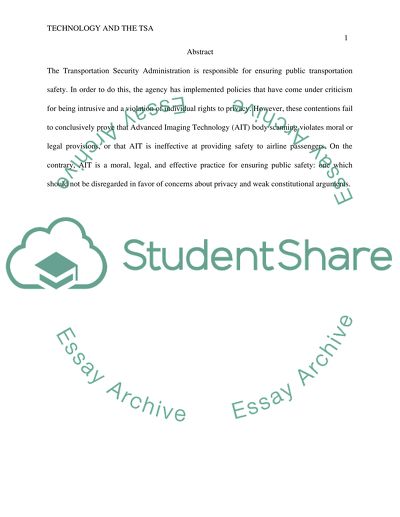Cite this document
(“Technology and the Transportation Security Administration: An Ethical, Term Paper”, n.d.)
Technology and the Transportation Security Administration: An Ethical, Term Paper. Retrieved from https://studentshare.org/military/1433440-technology-and-the-transportation-security-administration-an-ethical-legal-and-practical
Technology and the Transportation Security Administration: An Ethical, Term Paper. Retrieved from https://studentshare.org/military/1433440-technology-and-the-transportation-security-administration-an-ethical-legal-and-practical
(Technology and the Transportation Security Administration: An Ethical, Term Paper)
Technology and the Transportation Security Administration: An Ethical, Term Paper. https://studentshare.org/military/1433440-technology-and-the-transportation-security-administration-an-ethical-legal-and-practical.
Technology and the Transportation Security Administration: An Ethical, Term Paper. https://studentshare.org/military/1433440-technology-and-the-transportation-security-administration-an-ethical-legal-and-practical.
“Technology and the Transportation Security Administration: An Ethical, Term Paper”, n.d. https://studentshare.org/military/1433440-technology-and-the-transportation-security-administration-an-ethical-legal-and-practical.


